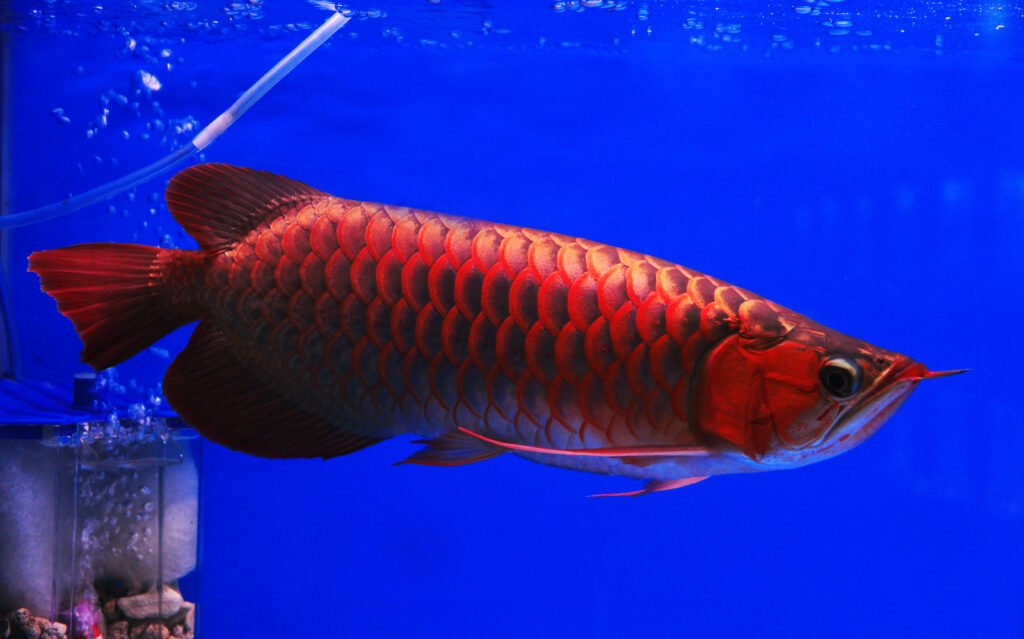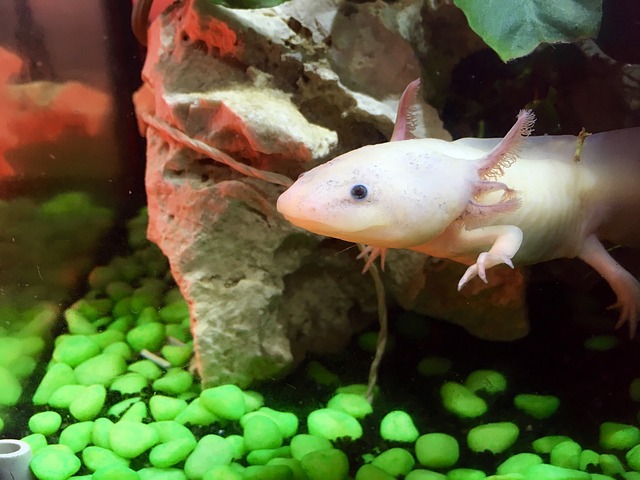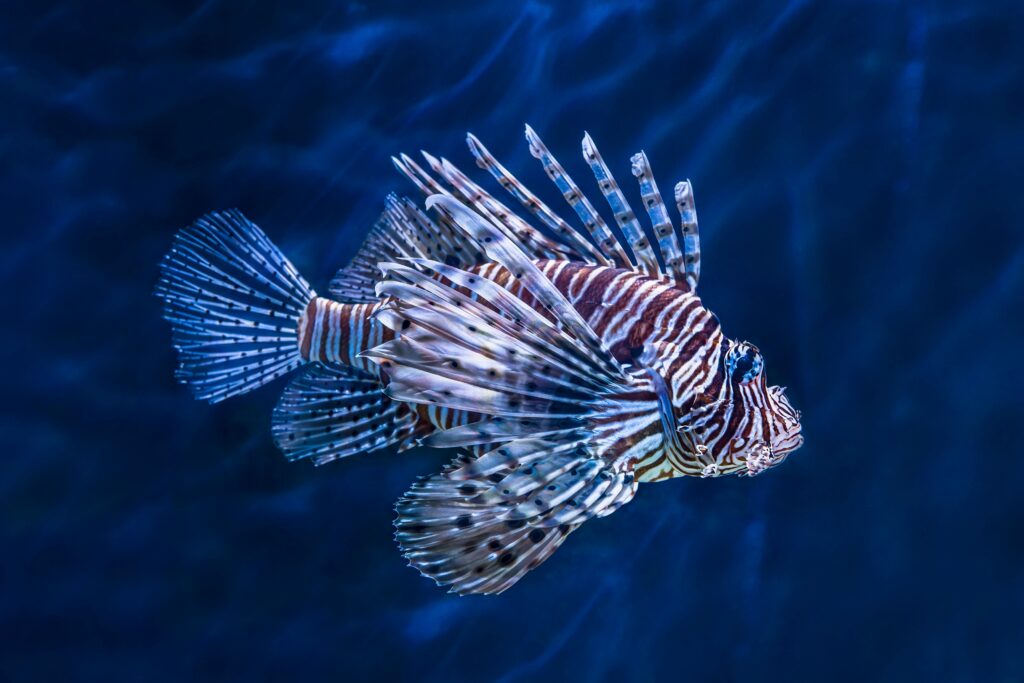We all know how big a role dragons play in legends and mythology, stretching back to the earliest parts of human history and across all cultures.
What most of us don’t know, though, is that there is a small army of animals that look just like dragons – including the 15 popular fish that look like dragon preachers we highlight below – that just might have been the inspiration for the mythical, fire breathing beasts.
Let’s dig a little deeper, shall we?
Contents
Popular Fish That Look Like Dragon
Other similar posts:
- Popular Fish With Ugly Teeth
- Popular Fish With Big Forehead
- Popular Fish with Big Eyes
- Popular Fish With Legs
1. Asian Arowana

While a lot of the dragon looking fish on this list are saltwater fish, many of them living in some of the biggest oceans around the world, this dragon fish is a freshwater creature – and it also happens to be one of the most popular aquarium fish on the planet, too.
Long, slender, and with fins that look like dragon gills, these fish can get to be up to 3 feet long or longer and have a real dragon-like face and appearance.
One of the coolest things about this fish is that it comes in a multitude of different colors. You’ll be able to find the perfect options to add to your aquarium, but keep this in mind:
These dragon fish are known to jump out of the water to capture their prey. They can even climb trees (and over walls), surviving on land for a short while – long enough to capture their lunch, anyway!
2. Axolotl

Sometimes called the Mexican walking fish, this fish is actually a salamander that’s also found in freshwater all throughout Mexico and parts of South America.
Researchers sometimes call this the “living dragon fish”, not just because of its very obvious dragon-like appearance (this thing looks like it could stunt double for dragons in a movie) but also because it has the ability to regenerate body parts that it loses.
This fish has a long body with four legs, each of them with webbed feet. The skin of this fish can come in a variety of different colors (including dark brown and dark green, classic dragon colors), but it’s the Dragon shaped head that really separates this from the rest of the pack.
3. Blue Glaucus Dragon Fish

These blue dragons – sometimes even called blue ocean slugs – are relatively small but still have a very fantasy dragon-like aesthetic to them, earning them a spot on our list.
While these dragon fish look like relatively friendly creatures at first glance, it’s important to understand that they are anything but harmless. These fish are incredibly poisonous (especially to human beings) and you should avoid contact as much as possible.
In fact, the stinging capabilities of these fish can be fatal to human beings. If you are ever stung by one of these you’ll want to seek out emergency medical treatment ASAP.
4. Dragon Face Pipefish

Imagine, for a moment, what a seahorse would look like if it was stretched out almost completely flat (instead of curled like an S) and had its “crown” removed so that its face looked a lot more like a dragon.
That’s exactly what a dragon face pipefish looks like!
A notoriously poor swimmer, this fish spends a lot of time down on the bottom of the oceans in the Indo Pacific region. It sort of wiggles its way along the substrate (the same way that a snake might on land), allowing it to move considerably faster than it would be able to if it was swimming.
These fish do make fantastic home aquarium additions, though. They look incredible (the dragon aesthetic is unmistakable), have tons of personality, and are generally pretty simple and straightforward to keep in a saltwater enclosure.
5. Dragon Moray Eel

The facial features of this eel help to give it a very dragon-like aesthetic, but it’s the pointed teeth, the horns, and the unique color of this eel that really makes it look like a real life version of this mythical creature.
For starters, this eel has rows of jagged, foolishly sharp teeth that make it look a lot more aggressive (and a lot more dangerous for people) then it might actually be.
The horns on top of the head of this eel add to the overall dragon aesthetic, with big, black eyes that definitely add to the look as well.
Finally, though, you have a yield that is generally going to be a mixture of bright red, orange, and deep maroon or brown colors with touches of gold, white, and black as well. The end result is a fish that looks like it could have been made of dragon fire.
6. Dragon Goby

Dragon goby fish can be found all throughout the Atlantic coast of both North and South America, in freshwater as well as some of the brackish waters near the confluence of freshwater and saltwater.
These fish look a lot like a dragon (hence the name), especially when you look at the shape of their head, the spiny fins that run up and down their body, and the long tail that they have.
Even the front set of gills looks like a set of small arms that a dragon might use to move around.
This fish is relatively easy to keep in an aquarium as well. You’ll need water temperatures of between 76°F and 78°F, though – and your water conditions (especially solidity and pH) really need to be dialed in perfectly.
It’s not a bad idea to have a pretty decent sized enclosure to work with, too. These fish can grow up to a foot long and sometimes even longer than that.
7. Dragon Koi Fish

Dragon Koi (sometimes referred to as butterfly koi or dragon carp) are big, beautiful fish absolutely beloved by the Japanese and people from around the world, too.
Originally created by Japanese rice farmers that set up an artificial breeding program to “tame” these wild fish, dragon carp can grow to be 36 inches long – and sometimes even longer than that – inside of five or six years.
When keeping dragon koi, though, you need to be sure that your water conditions are pitch perfect.
Oxygen levels need to be maintained at 5 mg/L, your water pH level has to be between 6.8 and 8.2, and you need absolutely zero ammonia in the water. Temperatures of between 75°F and 85°F will treat these fish well!
8. Leafy Seadragon

Found almost exclusively along the western and southern coast of Australia, this dragon fish at first glance looks a lot more like an underwater leaf than anything else (which is exactly where it gets its name).
As soon as this fish starts to move through the water, though, the comparisons to a dragon become very apparent. The way the fish moves, the structure of its body, and the way that its leafy fins float through the water like a dragon wing through air are pretty unique.
9. Lionfish

A venomous species of fish you wouldn’t want to keep in your home aquarium, sometimes these dragon looking fish are called fire fish, turkey fish, or even a butterfly cod.
These fish have a spiny look to them, sort of like an oversized dragon head, and when they move through the water their red, white, and black colors blend together almost like a flame.
The tips of their spines and spikes are incredibly poisonous, with a number of fatalities from people that have encountered these fish in the wild reported every single year.
10. Seadragon

The normal sea dragon shares a lot in common with its leafy cousin we mentioned earlier, except without all the extra “vegetation” on their body.
Sort of looking like a hybrid between a dragon and a seahorse, these fish generally struggle to swim all that efficiently – which is why they stick close to the bottom of the ocean and kind of bounce along as needed.
11. Teugelsi Bichir
A medium-sized fish, almost always found in Cameroon and Nigeria (located in West Africa), this fish sort of looks like a mixture between an eel and a salamander with some very distinct dragon features mixed in, too.
Generally pretty easy to keep as a pet in a well-maintained aquarium, you’ll want to be sure that you have a tightfitting lid on the top of your enclosure. It’s not uncommon for these dragon fish to become spooked at night, bolting up, breaching the water, and muscling through an enclosure that isn’t really buttoned down.
12. Violet Goby
The violet goby (like the other goby fish on this list) have brilliant, rich, almost luminescent colors to them – though this one (no surprise here) is a much darker purple on average.
Found all along the Atlantic coast of North and South America (in fresh and brackish water), these fish look like baby water dragons for sure.
Their body is long and slender, covered in spike looking fins, and they have a squared off kind of head that looks a lot like what most people think of when they imagine a dragon, too.
13. Barbelled Dragonfish
Far and away one of the most interesting of all the fish on this list, these creatures are able to live in some of the deepest depths in oceans all over the world.
About 10 inches long (on average), these fish have a super dragon-like look to them. They have a big dragon face, an oversized mouth, gigantic fangs, and their head can articulate 130°. You’d almost think this fish was going to belch fire just because of how dragon-like it really is.
On top of all of that, these fish have natural bioluminescence. That means that they can quite literally “glow” on demand. They also have the ability to create a sort of strobe like effect to attract prey or drive off predators.
Red barbelled dragon fish look like they are spitting fire when they start to crank up the luminescence!
14. Black Dragon
The black dragon fish looks a whole lot like a menacing creature from medieval lore or ancient Eastern mythology, a living demon with an evil looking face that’s about as dragon-like as it gets.
Found almost exclusively in the southern hemisphere, these fish swim in depths approaching 2 km deep. We are talking so deep that sunlight (literally) cannot penetrate that far down.
Because of this, these black dragon fish generate their own light. They do this through bioluminescence – but they aren’t doing this at all to attract prey the same way that a lot of other bioluminescent fish are, but instead use their natural lights as an infrared flashlight.
How wild is that!
15. Dragonet
These beautiful little fish are members of the goby family, though they have bigger things that look like “wings” that really help them pull off the dragon look.
Fish filled with plenty of personality, it’s no surprise that folks love to keep them in their own aquarium. The trick here, though, is making sure that water conditions aren’t just dialed in perfectly but that this dragon fish is going to be able to get all the food it needs to thrive.
These fish generally consume a ton of live copepods out in the wild. Feeding that to them in captivity, though, would be an absolute nightmare – which is why these fish need to be “trained” to eat high-quality and high-protein commercial fish food right from their earliest days.
The extra effort is well worth it, though. Having a tank filled with these little dragons is a site to see.
Closing Thoughts
Finding fish that look like dragons is a whole lot easier than you might think, with many of these fish appearing to serve as inspiration for the legendary dinosaur-like mythical creatures that so many cultures celebrate (and sometimes fear).
The list we highlighted above just barely begins to scratch the surface of the dragon like fish on our planet today.
Frequently Asked Questions
Can you keep a dragon fish in your aquarium?
There are some dragon fish that you’ll be able to reliably keep in your aquarium, though you’ll need to be sure you know what you’re getting into. A lot of these fish need very special water conditions to thrive in, and some have special dietary requirements as well.
How big do dragon fish get?
Dragon fish really run the gamut as far as size is concerned, with some (like the blue dragon fish we mentioned earlier) measuring a few inches at most to larger dragon fish coming in at a couple of feet long or longer.
How long will freshwater dragon fish live for?
Freshwater dragon fish can live for anywhere between a few years and a decade or more.

Ian Sterling, founder of Fishlab.com, began his aquarium journey over 30 years ago, driven by a deep fascination for fish and their diverse personalities. His website, Fishlab.com, is dedicated to making fishkeeping accessible and enjoyable, offering beginner-friendly guidance, expert insights, and a community for aquarists to connect and share experiences.

